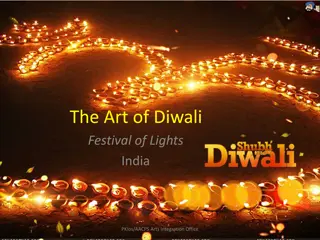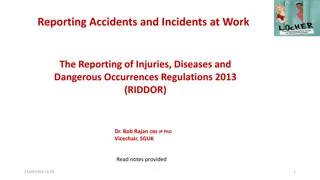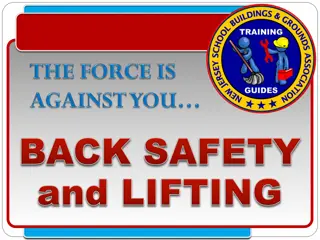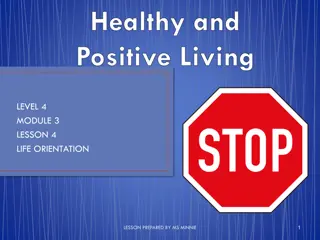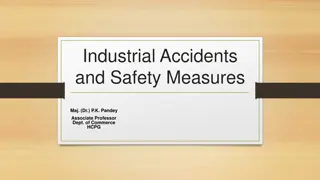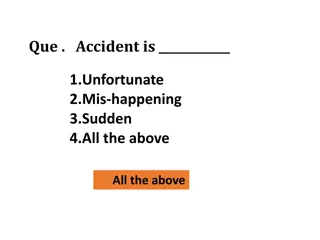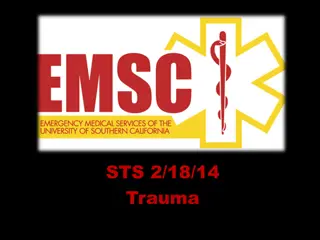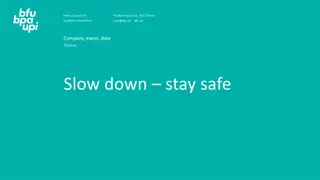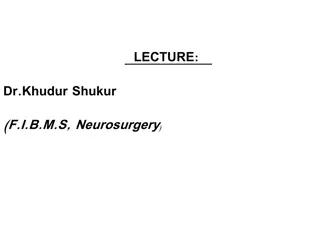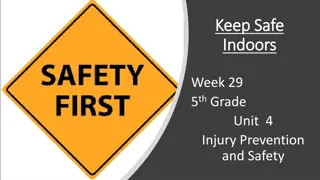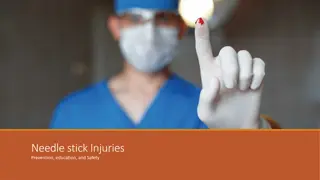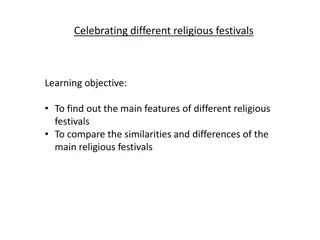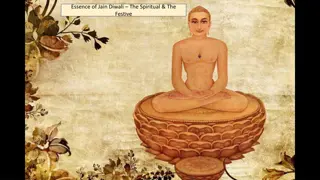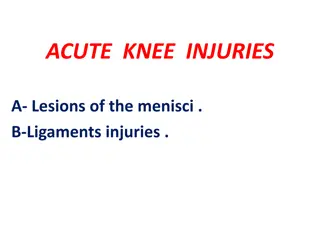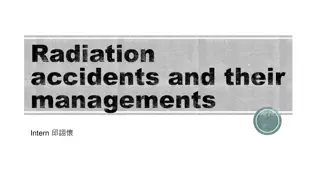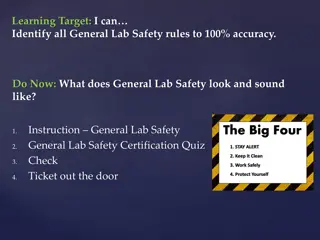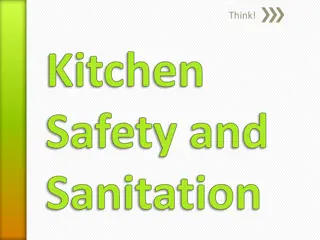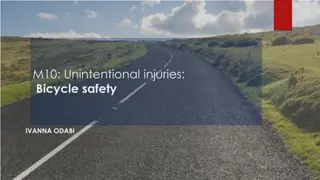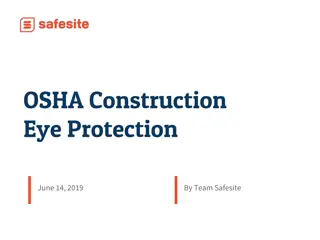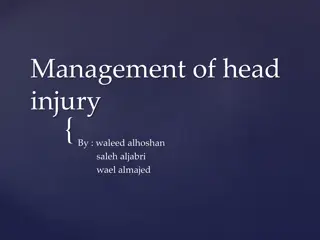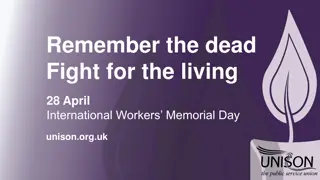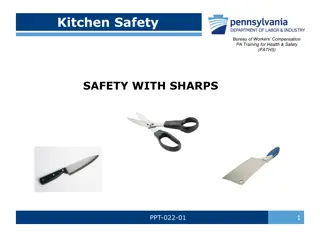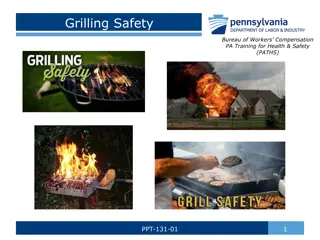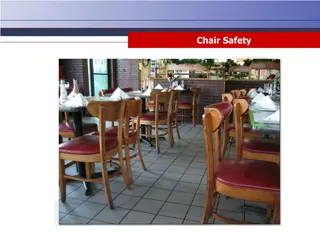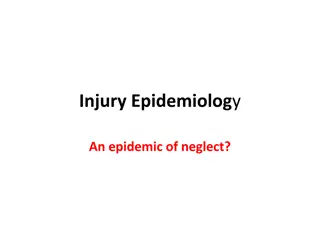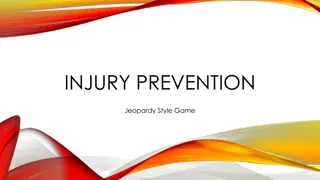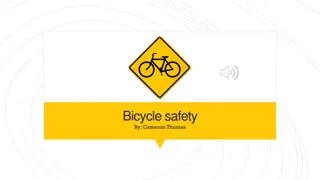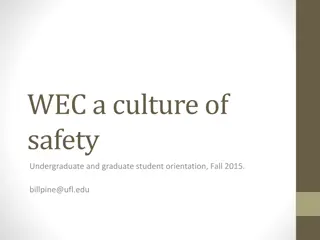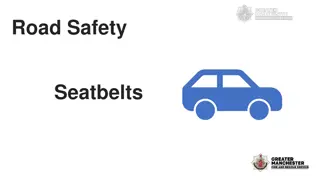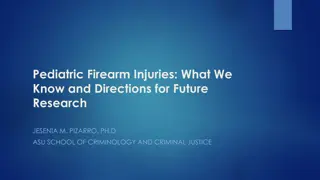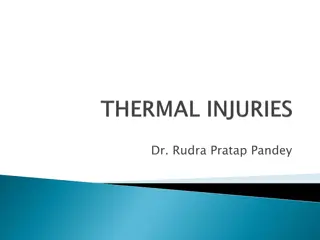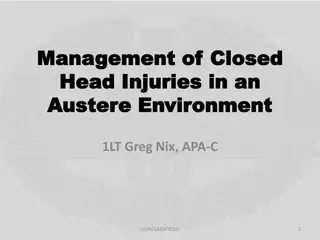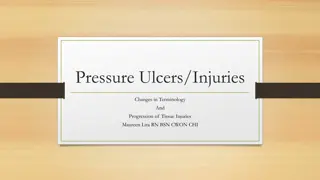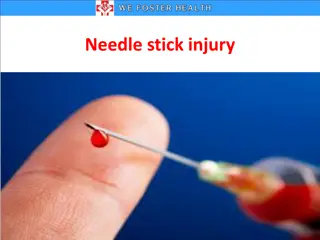Essential Diwali Safety Tips to Avoid Accidents and Injuries
Enjoy the festive spirit of Diwali safely by following essential safety tips to prevent accidents and injuries. From handling firecrackers outdoors to being prepared for minor and major burn incidents, this guide covers key safety measures to ensure a joyful and hazard-free celebration. Stay informed and take proactive steps to safeguard your loved ones during the festive season.
Download Presentation

Please find below an Image/Link to download the presentation.
The content on the website is provided AS IS for your information and personal use only. It may not be sold, licensed, or shared on other websites without obtaining consent from the author. Download presentation by click this link. If you encounter any issues during the download, it is possible that the publisher has removed the file from their server.
E N D
Presentation Transcript
INTRODUCTION Diwali is thoroughly enjoyed by people of all age groups as they love the splendor and sparkle of fireworks. This Diwali too, you will witness spectacular illumination, with diyas and a sparkling, festive sky. It's a great season to catch up with friends and family and spend time together bursting crackers and binging on sweets. It's a happy occasion and the last thing on your mind is the possibility, even a minute one, of things going very, very wrong. The bad news is that every single year, during Diwali, there are hundreds of accidental fires in homes culminating in injuries and even death. The festival of joy turns into a tragedy for the families affected. The good news is that most of these accidents are the result of sheer carelessness and apathy towards basic safely tips and hence, can be easily avoided. In order to avoid these type of unwanted incidents/accidents, I request you to plz go through the safety tips provided in further slides
GENERAL SAFETY TIPS Diwali and diyas go hand in hand, so while doing up your house, remember to keep the diyas in isolated spots, far away from curtains, bedding, wall decorations or any other combustible materials. Use good quality of electric decorative lights. Make sure there are no naked wires in it. Hang the lights at height if your children are young and are likely to touch it. The electric lights should never be tied to any metal poles as any current leak can energize the pole and give a shock to anyone who touches the pole. While tradition dictates that you 'dress up' for the season, try to keep away from synthetics and silk, especially while bursting crackers. Wear cotton apparel and keep a safe distance from the fireworks. Keep the regulators of your cooking gas cylinders turned off and do not keep the cylinders in balconies or open spaces to keep them protected from stray rockets. In case of any accident don't drive recklessly while taking a victim to the hospital.
DOs & DONTs - HANDLING FIRE CRACKERS Use fireworks only outdoor. Buy fireworks of authorized/reputed/licensed manufacturers only. Keep the fireworks to be used at a safer place. Always use a long candle/'phooljhari' for igniting fire crackers and keep elbow joint straight to increase the distance between the body and the crackers. Keep two buckets of water handy. Every major fire is small when it starts. Don't ignite fireworks while holding them. Don't bend over the fireworks being ignited. Don't ignite fireworks in any container. Don't tamper with misfired fireworks. Don't attempt to make fireworks at home. Don't allow small children to handle fireworks. Don't throw or point fireworks at other people. Don't carry fireworks in the pocket. Don't store firecrackers near burning candles and diyas.
PREPARE FOR MINOR AND MAJOR BURN Find out the medical emergency number of your doctor/ hospital and save in mobile and paste at visible places. Remember, all major fires are small when they start; extinguish it immediately. If someone catches fire, don't panic and act fast. Learn to differentiate between minor and major burns. In the event of minor burns, only the outer layer of skin is burned. The skin usually gets red with swelling and sometimes it is painful too. This is a first degree burn. When blisters develop on the skin and it becomes intensely reddened with splotchy appearance, it is a second degree burn. It is accompanied with severe pain and swelling (better to consider it as a major burn). Major burns or the most serious burns, also called third degree burns. Third degree burns are the most severe burns, extending down into the subcutaneous tissue. They may even extend even further, affecting bone, muscles and other structures.
FIRSTAID FOR MINOR BURNS Hold the burnt area under cool running water for at least 10 minutes or until the pain or burning sensation subsides. Remember, the water should not be too cold . If the above is impractical to do, immerse the burnt area in cold water. Cooling the burn conducts heat away from the skin and reduces swelling. Cover the burnt area with a sterile gauze bandage. Don't use fluffy cotton. It may irritate the skin. Always wrap the gauze loosely so that it doesn't put pressure on burned skin. Bandaging helps keeping air off the burned skin, reduces pain and protects blistered skin. Don't use ghee, oil, butter or any ointment etc. on the burn as it increases the risk of infection. Don't break blisters, it may cause infection. Minor burns generally do not need any further treatment. However, watch for signs of infection which include increased pain, redness, fever, swelling or oozing. In case of infection, seek medical help.
FIRSTAID FOR MAJOR BURNS If a person s clothes catches fire, to put it off, make the victim roll on the floor with a blanket. Call medical emergency number. Until medical help arrives, take the following steps: After extinguishing fire, make sure that the victim is no longer in contact with smoldering materials or exposed to smoke or heat. However, don't remove burnt clothing. Don't immerse severe burns in cold water. It can cause shock. Check for signs of circulation - breathing, coughing or movement. If there is no breathing or other sign of circulation, begin cardio pulmonary resuscitation (CPR) - chest compressions combined with mouth-to-mouth rescue breathing. Elevate the burned body part or parts. If possible, raise them above heart level. Cover the burn area with a cool, moist, sterile bandage or a clean, moist cloth. You can even use moist towels for the purpose.
ENVIRONMENTAL ISSUES: Deep (light) avali (rows), a row of lights that taught us to vanquish ignorance that subdues humanity and to drive away darkness that engulfs the light of knowledge. But Diwali today means .. More air, noise, water, land & social pollution due to use of lots of fire-crackers. More patients for hospitals during & after the festival, more darkness rather than light. Highly polluting nature of these firecrackers lead to a plethora of diseases
ENVIRONMENTAL ISSUES Cont. Are you aware what is the impact of bursting Fire crackers on the environment? It affects environment in the following ways: Air Pollution affecting health especially to diseased persons, aged people, children & pregnant women. Water & land pollution will pollute our resources rivers, lakes Increased Noise levels can cause deafness/stress to many. It takes several weeks to bring back normal air quality. Fire hazards causing heavy damages to life and property. Social nuisance leading to community disharmony. The indicators of depleting environmental quality are harmful gases in the atmosphere, degradation of land, global warming, ozone depletion, loss of species and habitat and air and water pollution.
SOME OF THE FACTS YOU SHOULD KNOW: Crackers contain highly toxic heavy metals like cadmium, lead, copper, manganese and zinc. Others have arsenic, mercury, chromium and iron oxides which lead to severe pollution after they are burnt. According to the CPCB, 95 per cent of the crackers available in the market violate noise and air pollution norms. Thanks to crackers, pollution levels of Delhi rose to 10 times the permissible limit on Diwali, when noise levels touched 140 decibels. Normal decibel level for human beings is 60. An increase by 10 decibels means double the noise volume and intensity. When we use these crackers we are also violating the directives of The Supreme Court in Sep 2001 regarding firecrackers.
SOME OF THE FACTS YOU SHOULD KNOW Cont Now if this is about the children & adults who play with firecrackers What about the 1000s of children who make them ???????? Here are some facts!!!!!!!! Sivakasi in Tamilnadu produces more than 90% of firecrackers in India. More than 100 thousand children aged 3-14 work there 12-16 hrs a day for a meager Rs.10-15. The corrosive gunpowder mixture with which they work eats away their tender skins first and their flesh later So bear in mind that when we spend 100s of rupees on these polluting crackers we are also encouraging those who employ these little children & helping the 750 crore fireworks industry flourish! In the process we are also denying these vulnerable children, their basic rights to read, write and play.
CONCLUSION: I think, after going through the PPT now you will be aware about the brighter as well as darker sides of this auspicious festival. Now its up to you how you want to celebrate this festival I mean by spreading happiness in the society through your positive and eco friendly attitude or by contributing some more pollution to environment and by indirectly contributing in encouraging child labor (who are into fire cracker manufacturing) in our society. Remember that Diwali is a festival to be enjoyed by all. So, celebrate in a manner that does not cause inconvenience or harm to yourself , to others and/or to our environment.
WISHING YOU A VERY HAPPY & SAFE DIWALI Be Careful; Carelessness doesn t bounce; it shatters * The data and tips provided in this PPT are collected from different websites .


